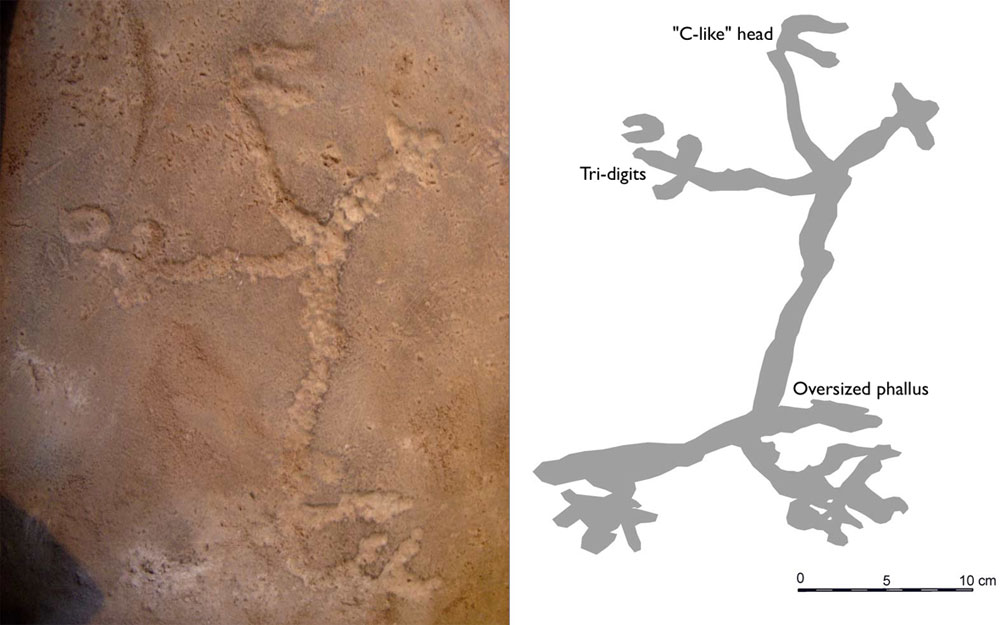Brazil discovered a 10,000-year-old stone carvings
Brazilian archaeologists have discovered a 10,000-year-old stone carvings. This work has become one of the oldest cave carvings in America.
The information was published on PLoS ONE science week, leading to intense controversy about when and how people came to America.
The picture is 30cm long, carved a man with a C-shaped head, each hand has three fingers and an oversized penis.

The most ancient stone carvings
Walter Neves, an archaeologist at the University of Sao Paulo and a member of the archeology team, said that petroglyph or petroglyphs may be part of the "fertility rite".
This ancient work was found in 2009 in Lagoa Santa, in Central Brazil, about 60km from Belo Horizonte, the capital of Minas Gerais state.
According to the authors' writings, including Walter Neves, on PLoS ONE weekly newspaper "We can confidently say that this petroglyph was over 10,500 years old, maybe even 12,000 years old. That means that this petroglyph is the oldest ever found in the New World ".
Experts say they measured carbon picture and the clay surrounding the painting.
The most accepted hypothesis so far is that the man who crossed the Bering Strait was frozen from Siberia and traveled to Alaska 11,000 years ago, before they gradually moved south to warmer.
The hypothesis, also known as "Clovis First" says, that the Clovis from North-West America were the first individuals to arrive in the Americas around 11,500 years ago. however, archaeologist Walter Neves - a critic of this theory - disagreed.
"We have shown that people have come to live in the Americas very early. About 11,000 years ago there was a great diversity of symbols appearing in the continent," he told local newspapers.
- Mysterious carvings on stone
- Mysterious prehistoric stone carvings in Scotland
- Scientists found a Buddha image carved in stone in Siberia
- Display the 2,000-year-old stone carvings written in the name 'Jerusalem' in Hebrew
- Discovering stone carvings of 2.6 million years old
- Discover the most ancient mysterious carvings of North America
- Israeli archaeologists discovered many 2,000-year-old carvings
- The carving depicts the oldest description of a supernova
- Mysterious carvings on ancient stones only appear in the moonlight
- Discovered the
- Stone carvings in Alta - Norway
- The stone is the oldest written word
 Discovered an ancient centipede fossil 99 million years old
Discovered an ancient centipede fossil 99 million years old Discovered bat-like dinosaurs in China
Discovered bat-like dinosaurs in China Discovered a 200-year-old bronze cannon of the coast
Discovered a 200-year-old bronze cannon of the coast Discover 305 million-year-old spider fossils
Discover 305 million-year-old spider fossils